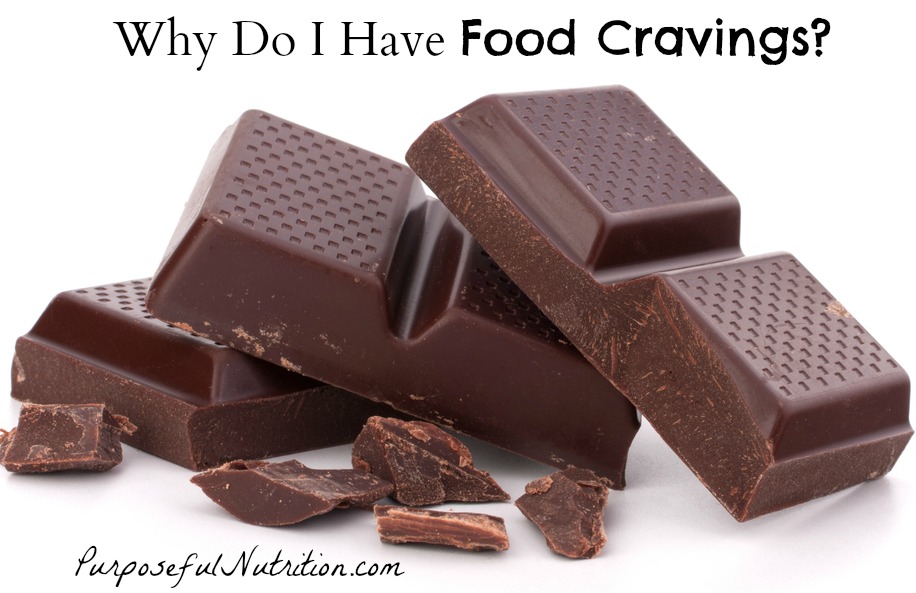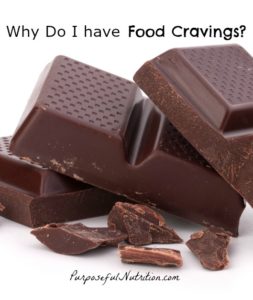This post may contain affiliate links which won’t change your price but will share some commission.

(“We are a participant in the Amazon Services LLC Associates Program, an affiliate advertising program designed to provide a means for us to earn fees by linking to Amazon.com and affiliated sites.”)
Most of us have somewhere along the way have wrestled with food cravings of some sort. One big one is chocolate, especially for women and especially around that certain time of the month. Because it is such a common phenomena, it seemed worthwhile to examine the why behind food cravings, in order to know how to address it in healthy ways. It is important to be able to separate true hunger from food cravings, so effective solutions can be applied.
According to Trudy Scott, (Food Mood Expert and Certified Nutritionist), “anxiety/mood issues together with cravings and emotional eating, can be a sign of imbalanced brain chemistry and/or nutrient deficiencies”. Addressing the underlying issues can make a big difference. (source)
Chocolate
Food cravings are usually at least in part, an indication that your body is missing something. One of the most common cravings with a fairly clear indicator is chocolate. A significant component of chocolate is magnesium, so that is a great place to start to deal with those cravings. Magnesium is an essential mineral for our health and is involved in hundreds of processes in our bodies, so when we become deficient it will show up in muscle aches and soreness, sleep issues, GI issues, and many more symptoms. Magnesium is easily depleted when we are stressed, as well as during a woman’s menstrual cycle as hormones fluctuate.
Chocolate also has antioxidants and it can also affect the brain, leading to an increase in neurotransmitters (serotonin) and dopamine and a feeling of happiness. Women have a natural decrease in serotonin in the brain in the week before menstruation, so this may partially explain the specific craving for chocolate during this time. And most chocolate has sugar, which is a whole other reason for cravings. Sugar acts like a drug in our bodies and once we are addicted to it, we need more on a regular basis. If your blood sugar levels rise or fall easily and you struggle with low blood sugar, chocolate is an easy fix, because it is delicious and quick pick-me-up food. If you find yourself feeling moody, irritable, shaky and fatigued, especially between meals, then your chocolate cravings may be the result of low blood sugar levels.
Sweets
Sugar is a drug. There is really no more simple way to explain this. Once you start eating sugar you will crave it on a regular basis, unless you go through a withdrawal and detox. This includes all forms of sugar- white, brown, coconut sugar, honey, maple syrup, agave, brown rice syrup, stevia, erythritol, xylitol and anything else you can think of. Not all sugars are equally harmful. Many of the sweeteners listed have benefits when consumed, such as minerals in coconut sugar or antibacterials effects of raw honey and other benefits. Stevia, xylitol, and erythritol do not raise blood sugar so are less destructive to the body, but do contribute to the brain’s addiction to sweet taste and sugar.
Those who have adrenal fatigue and/or low blood sugar will have cravings for sweets, because the body looks for quick ways to raise the blood sugar and bring energy. Sugar is a quick form of energy, but the problem is that it won’t last. When sugar is the main thing eaten, blood sugar will quickly rise and then fall again, just as quickly, leaving you in the same place you were before. It can easily become a frustrating cycle of cravings and unhealthy, quick foods that lead to weight gain, low energy, and poor health. Signs of low blood sugar include headaches, lightheadedness, irritability, shakiness if too long between meals, and cravings for sweets and starch, all of which are relieved by eating. Regular meals with protein and healthy fats can make a big difference for those who deal with low blood sugar. The amino acid glutamine can also make a difference for these folks. (source)
Amino acid deficiencies
According to Trudy Scott, there are several other amino acids which can be deficient, leading to food cravings and often anxiety and other problems. Many people are familiar with cravings that connect to low serotonin, because they are often tied to carbs and chocolate. Serotonin is a neurotransmitter that is produced in the gut and has a significant effect on your mental health, as well as your GI system and even blood platelets and bone health. (Source) Low serotonin will lead to symptoms like anxiety, depression, panic attacks, obsessive thoughts, irritability, PMS and mood swings, digestive issues, nausea, insomnia, and afternoon and evening cravings for sugar, sweets, and alcohol. An effective intervention for low serotonin is regular good quality proteins, like grass fed and pastured meats, poultry, fish and eggs. Eating plenty of veggies, fruit, good fats, nuts and seeds, along with a good multi-vitamin supplement, will provide all the cofactors (like magnesium, vitamin B6 and zinc etc) necessary for making neurotransmitters. And adding in the amino acid Tryptophan or 5-HTP, can make a significant difference in these symptoms and in food cravings, because the body now has what it needs. Trudy Scott recommends Lidke Technologies L-Tryptophan.
The other big deficiency to consider is a deficiency of GABA. Symptoms of low GABA included anxiety, panic attacks, stiff or tense muscles, inability to relax, burn out, and craving carbs, alcohol, or drugs to relax and cope. GABA stands for gamma-amino butyric acid (now you understand why the abbreviation). GABA is also a neurotransmitter, responsible for calming and relaxing the body. Again getting sufficient good quality protein and whole foods, like veggies, fruits, nuts, and healthy fats are all important to get GABA into your diet. Yoga, try tai chi, meditation, taking walks outdoors in a peaceful environment or taking a vacation can all help raise GABA levels. If needed GABA Calm from Source Naturals is recommended by Trudy Scott to raise levels as well. (source)
Other food cravings
There are other food cravings which can be a result of nutritional deficiencies in other areas. A craving for cheese could indicate a calcium deficiency or insufficient essential fatty acids. The fatty acids can be replenished with Omega 3′s (EPA and DHA, found in flax oil, ground flaxseeds, chia seeds, and walnuts. Other sources of calcium include dairy products, sesame seeds/ tahini, broccoli, kale, legumes, mustard and turnip greens. (source)
Cravings for red meat and eggs can be a sign of an iron deficiency. Prioritizing eating meats (especially organ meats), eggs, beans, legumes, unsulphured prunes, figs+ other dried fruit, seaweed, spinach, cherries, and vitamin C for iron absorption will all help with this deficiency. (source)
If you have a consistent food craving, try to step back and take a look at your diet and figure out why you might be struggling so much. I am a firm believer in finding the why behind problems and not just addressing symptoms. If you are deficient in some way in your diet (and most of us are in the USA), then it would be wise to address that issue and see what kind of changes you see in your cravings. Then you can use that energy you spent fighting the craving for something more productive.

Please share this post on social media and with others you think can benefit from this information.
For more information and Trudy Scott’s food cravings/ anxiety questionnaire.

Leave a Reply